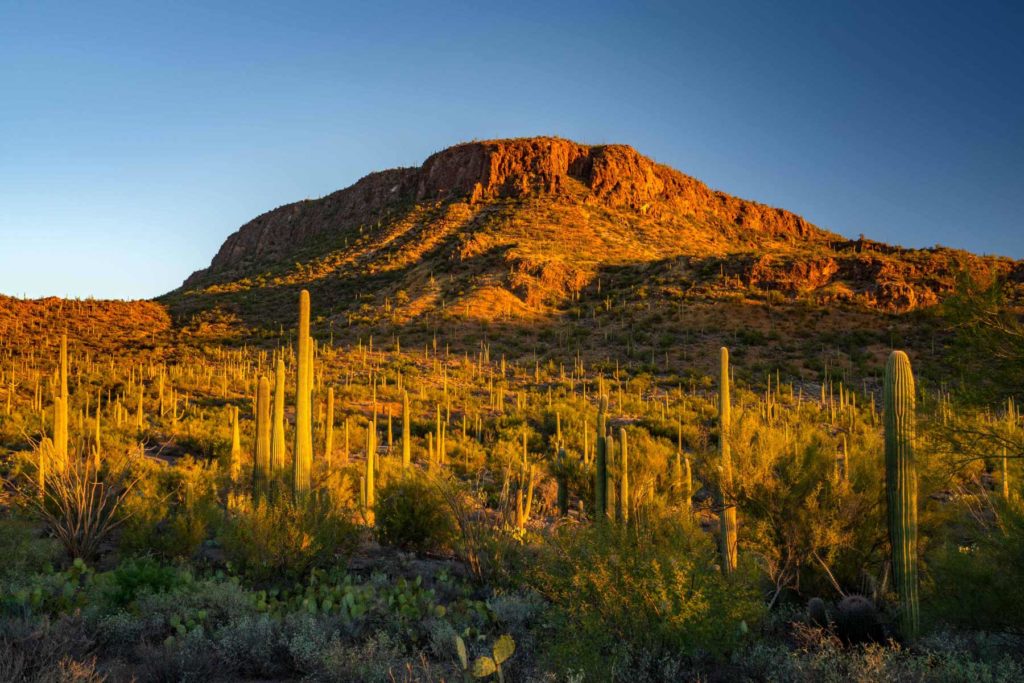
Article Summary: National Parks Near Tucson
National Parks Near Tucson! There’s so much more to the Grand Canyon State than the Arizona Wildcats. In this article, More Than Just Parks gives you some exciting vacation destinations within a day’s drive of Tucson.
I’ve been to so many of these amazing places since retiring from teaching in 2018. Did I mention that I taught history? I spent a lifetime teaching about the history behind these momentous sites. Then I got to see them firsthand. And now I’m sharing the stories of these incredible places with you. It doesn’t get any better than that!
Tucson is known for the breathtaking Sonoran Desert, amazing Southwestern cuisine, and for having some of the cleanest air of any major city worldwide.
Tucson is also famous for its many diverse hobbyist communities, from photography and astronomy clubs to vintage car collectors and rodeo enthusiasts.
It’s also home to some amazing national parks which are within a day’s drive (or much less) from the city.
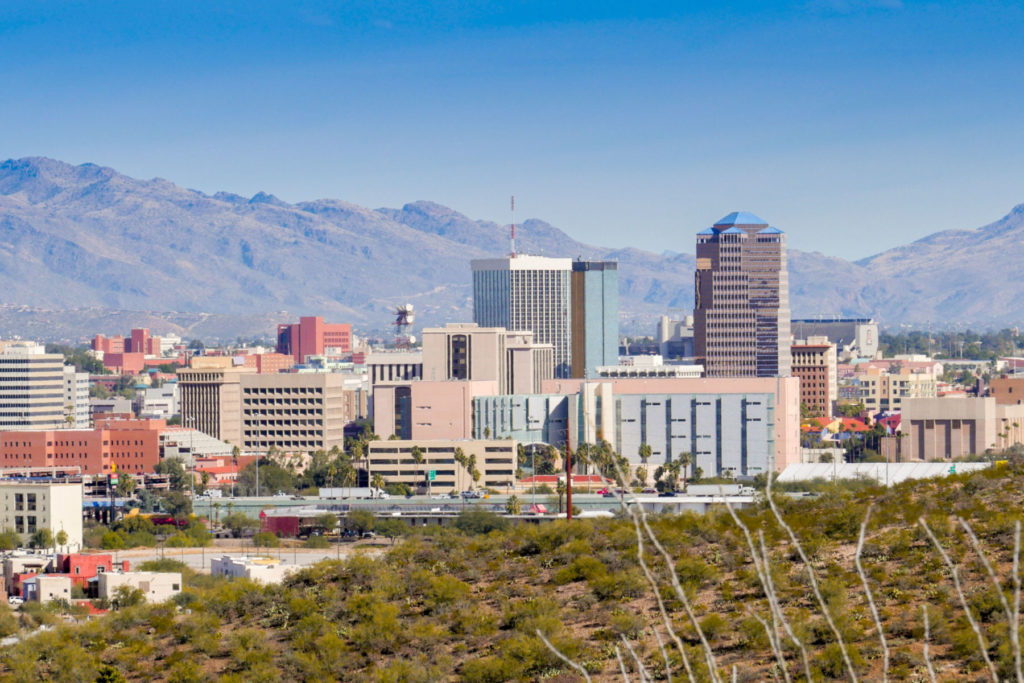
So, What Is A National Park?
We get asked that question a lot because there’s a difference between a “national park” and a “national park site.” To help you understand that difference you might want to check out our article titled: What Is A National Park Really?
If you’re planning a trip to Tucson then one book that I highly recommend is: Moon Tucson (Travel Guide) by Tim Hull.
Now let’s go ahead with 10 reasons why you’ll want to hop in your car and make a day’s drive from Tucson to one of these truly amazing places.
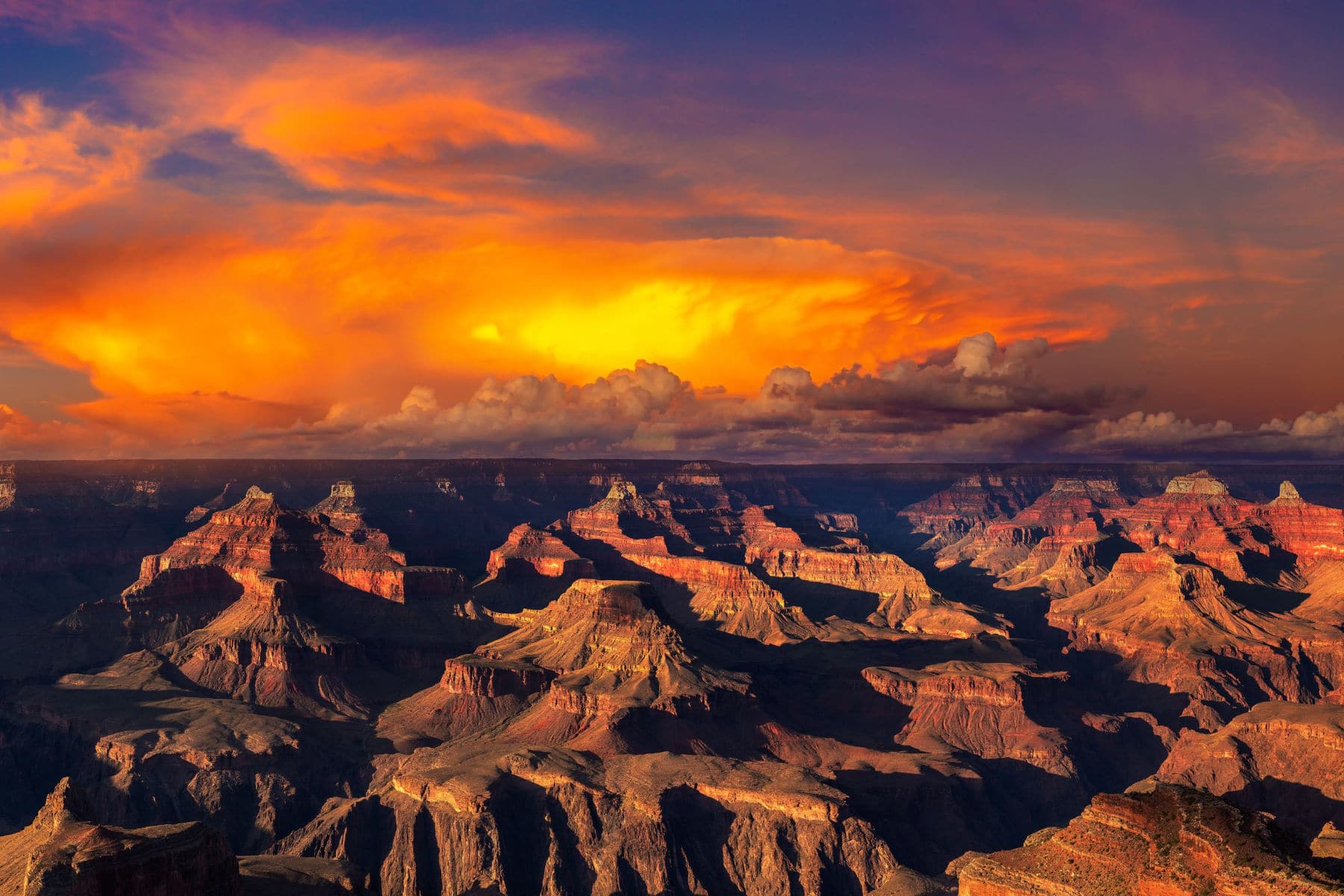
Table Of Contents: National Parks Near Tucson
Best National Parks Near Tucson
1. Casa Grande Ruins National Monument
Distance From Tucson: One hour via I-10 W & AZ-87 N.
Casa Grande Ruins National Monument is a preserved ancient Native American Hohokam ruin located in Coolidge, Arizona. The monument is named for the large four-story structure that is its main feature, known as the “Casa Grande” or “Great House”.
The history of Casa Grande Ruins National Monument can be traced back to the Hohokam people, who lived in the area from approximately AD 500 to 1450. The Hohokam were known for their sophisticated irrigation systems and innovative architecture, and the Casa Grande is one of the most significant structures that they built.
The exact purpose of the Casa Grande is still unknown, but it is believed to have served as a community center, a religious temple, or a defensive fortress.
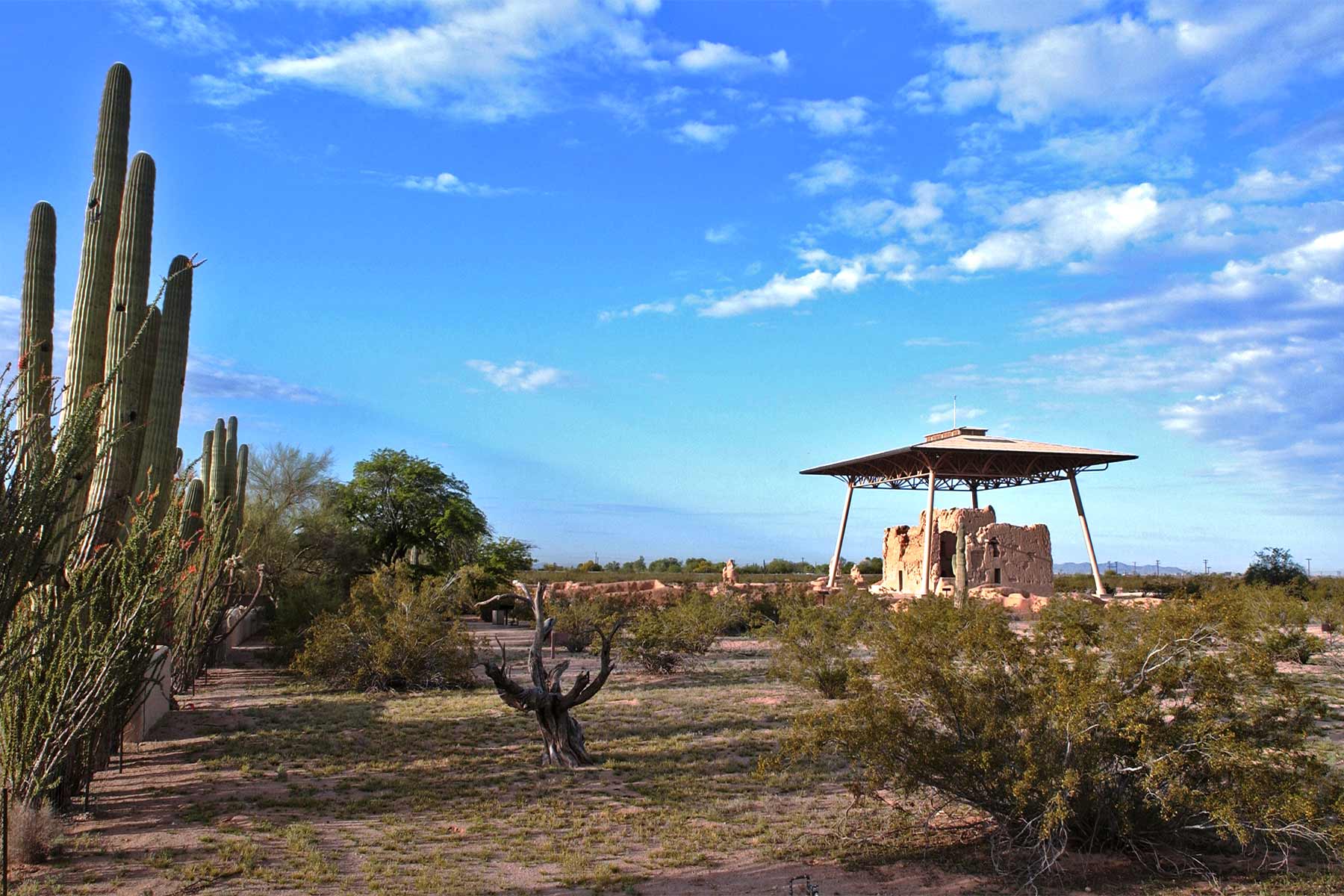
It’s An Important Piece Of American History
In 1891, the ruins were first protected by the federal government when President Benjamin Harrison set aside the site as a reservation for the use of the “civilized tribes”. However, it wasn’t until the early 20th century that the site received national recognition, when President Woodrow Wilson signed legislation creating Casa Grande Ruins National Monument in 1918.
Since then, the monument has been preserved and maintained by the National Park Service, and it is now one of the most popular tourist destinations in Arizona. Visitors can tour the Casa Grande, as well as several other Hohokam structures and exhibits, and learn about the history and culture of the Hohokam people.
Casa Grande Ruins National Monument is an important piece of American history, preserving the legacy of the Hohokam people and offering a unique glimpse into the lives of one of the Southwest’s ancient civilizations.

CHECK OUT: Arizona Bucket List Adventure Guide & Journal: Explore The Natural Wonders & Log Your Experience!
2. Fort Bowie National Historic Site
Distance From Tucson: One hour & 50 minutes via I-10 E.
Fort Bowie National Historic Site is a former military fort located in southeastern Arizona, near the town of Willcox. The fort was established in 1862 as a response to the Apache Wars, and it played a significant role in the conflict between the US military and the Apache people.
The history of Fort Bowie can be traced back to the mid-19th century, when the U.S. government began to expand into the southwestern territories and encountered resistance from the Apache people.
The fort was established as a military post to help protect settlers and secure the territory, and it became an important center of military operations in the region.
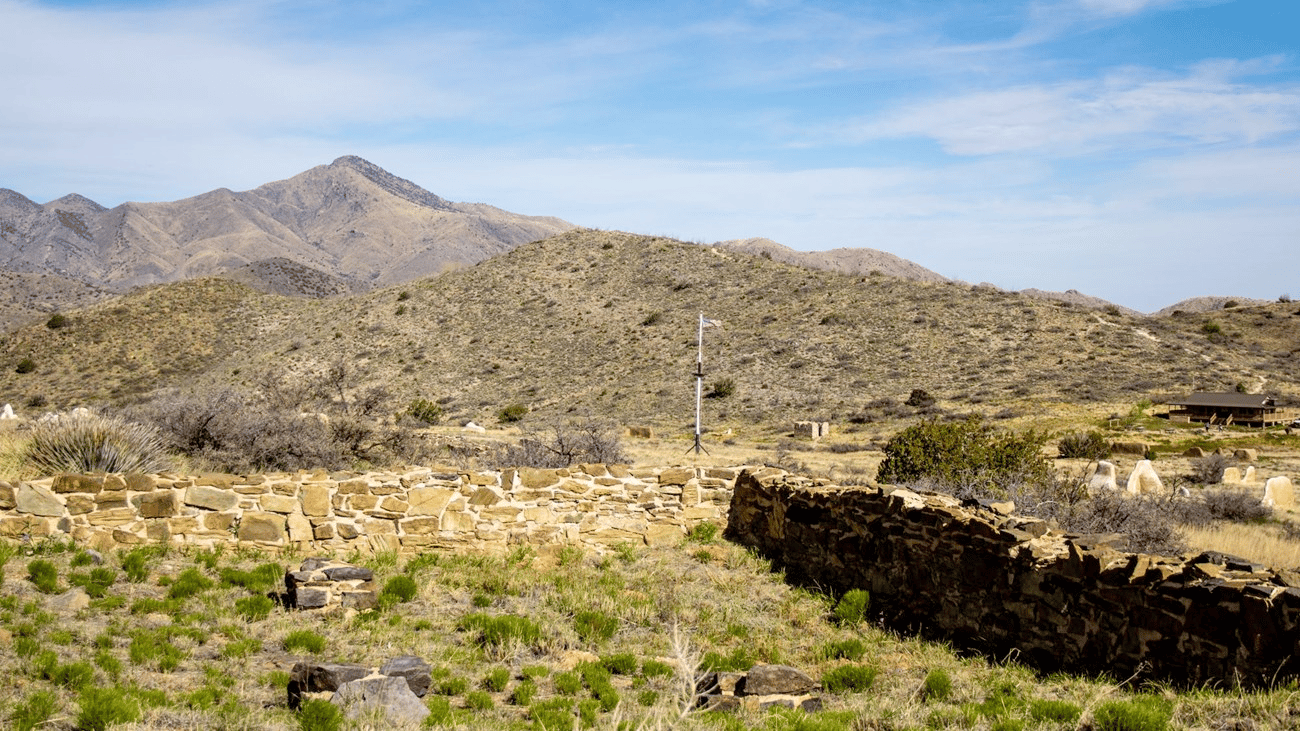
The Fort Was The Site Of Several Important Events
During its years of operation, Fort Bowie was the site of several important events, including the Bascom Affair, a confrontation between the US military and the Apache leader Cochise, and the Battle of Apache Pass, a significant military engagement in the Apache Wars.
The fort was also the site of a number of skirmishes and battles between the US military and the Apache people, and it played a crucial role in the eventual subjugation of the Apache people and the end of the Apache Wars.
Today, Fort Bowie National Historic Site preserves the history of the fort and the Apache Wars, offering visitors the opportunity to learn about this important chapter in American history.
The site features several hiking trails, including the one-mile Bowie Trail, which leads to the ruins of the fort, and several interpretive exhibits, which provide insight into the history of the fort and the Apache Wars.

RELATED: 18 SURPRISING New Mexico National Parks
3. Glen Canyon National Recreation Area
Distance From Tucson: Six hours via I-10 W & I-17 N.
It’s a long day’s drive from Tucson, but it wouldn’t be on our list if it wasn’t well worth it.
Glen Canyon National Recreation Area is a stunning natural area located in the southwestern United States. It encompasses over 1.2 million acres of canyons, plateaus, and red rock formations that surround the Glen Canyon Dam and Lake Powell, a massive man-made lake that spans across the Arizona-Utah border.
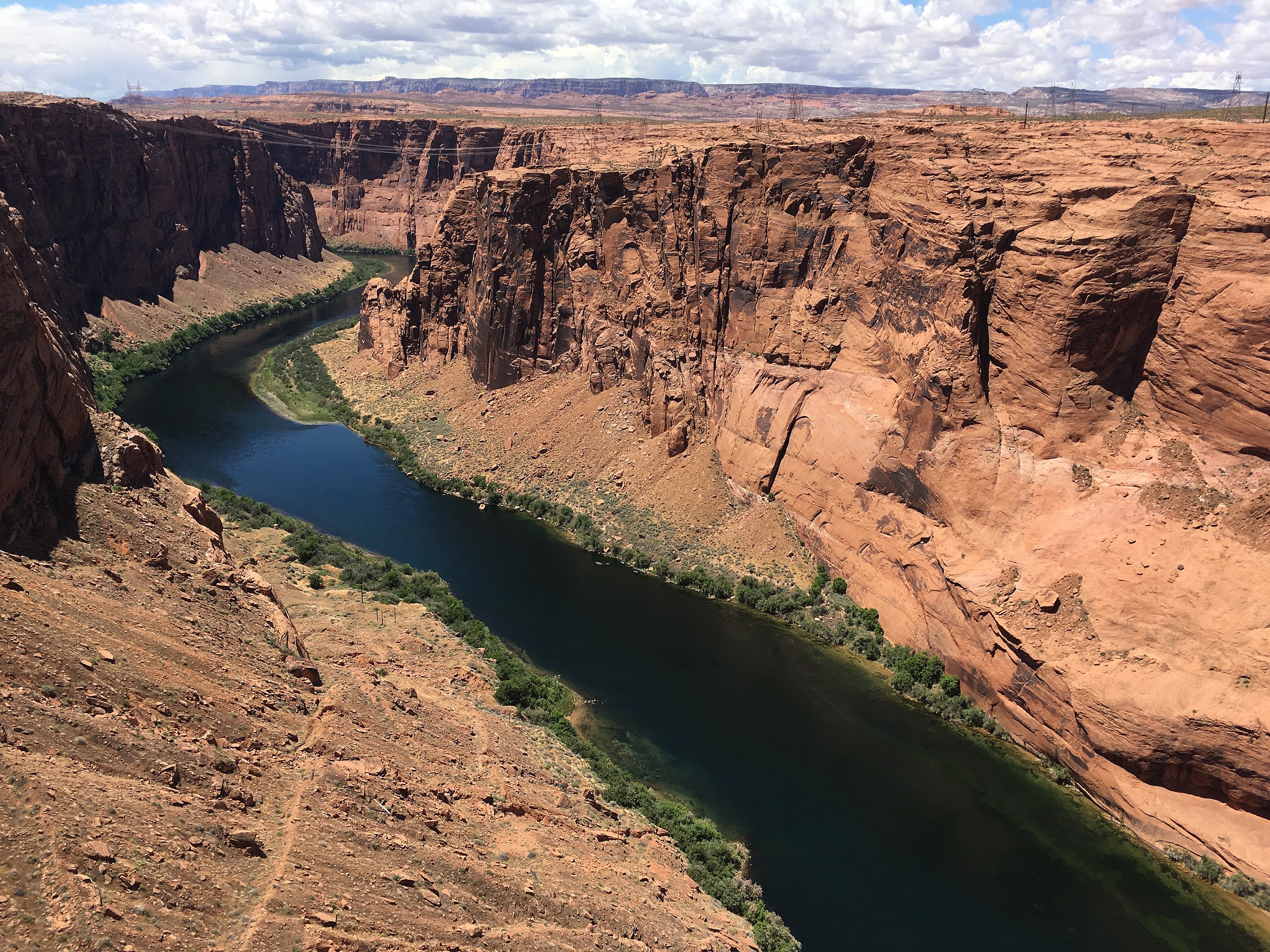
The recreation area offers visitors a variety of recreational activities, including boating, fishing, hiking, and camping. Visitors can explore the picturesque canyons and scenic trails, including Horseshoe Bend, one of the most photographed locations in the area.
There are also several developed campgrounds and marinas that provide access to Lake Powell and the surrounding area.
In addition to its recreational offerings, Glen Canyon National Recreation Area is also known for its rich cultural history. Ancient Puebloan ruins, rock art, and other artifacts can be found throughout the area, providing a glimpse into the lives of the indigenous peoples who once lived in the region.
Things To Do At Glen Canyon
The Glen Canyon National Recreation Area offers a variety of outdoor activities, including:
- Boating and fishing: The recreation area is located along the Colorado River, and is popular for boating, fishing, and other water-based activities.
- Hiking and camping: The recreation area features several hiking trails and campgrounds, providing opportunities for exploring the stunning landscapes and wildlife of the area.
- Scenic drives: The recreation area offers several scenic drives, including the Glen Canyon Dam Overlook, which provides breathtaking views of the Glen Canyon Dam and the surrounding landscapes.
- Wildlife watching: The recreation area is home to a diverse range of wildlife, including bighorn sheep, coyotes, and many species of birds, making it a popular destination for wildlife watching and birding.
- Cultural history: The recreation area is rich in cultural history, with evidence of human habitation dating back thousands of years, and includes several archaeological sites and ruins that are open to the public.
- Recreational activities: In addition to the activities listed above, Glen Canyon National Recreation Area is also popular for a variety of other recreational activities, including rock climbing, mountain biking, and horseback riding.
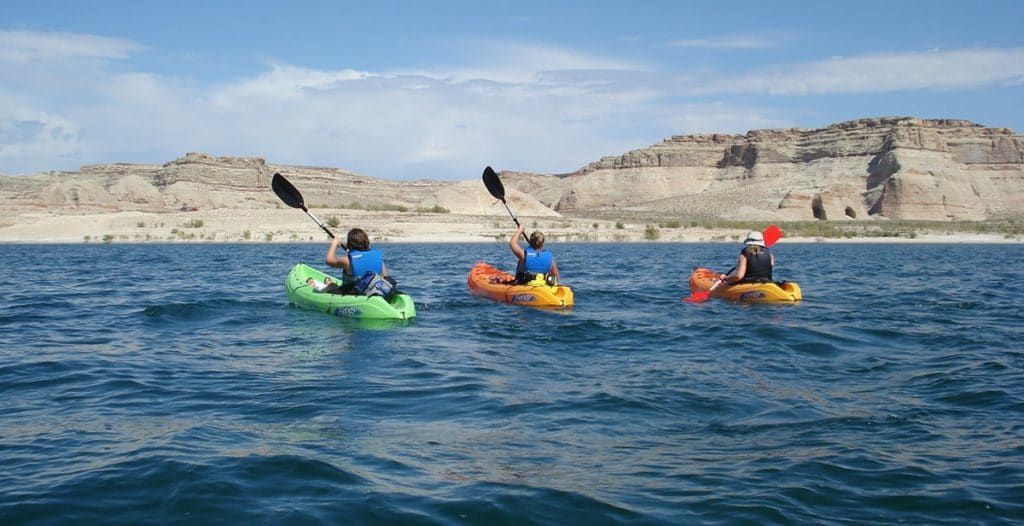
RELATED: 14 MIGHTY Utah National Parks & Monuments
More National Parks Near Tucson
4. Grand Canyon National Park
Distance From Tucson: Five hours via I-10 W & I-17 N.
There’s a reason it’s named the Grand Canyon State. You cannot travel to Tucson and not see one of the world’s greatest geologic wonders.
Arizona’s Grand Canyon National Park has a special significance for the founders of More Than Just Parks.
To quote the Pattiz Brothers:
We founded More Than Just Parks after a spur of the moment road trip with friends to the Grand Canyon during which we discovered the National Parks for the first time.

The History Of The Grand Canyon
The Grand Canyon National Park is a natural wonder located in northern Arizona, and is widely considered to be one of the most stunning landscapes on earth. The history of the Grand Canyon National Park dates back thousands of years, to a time when indigenous peoples lived and thrived in the region.
The first recorded European encounter with the Grand Canyon was by Spanish conquistador García López de Cárdenas in 1540, but it was not until the late 19th century that the canyon began to draw widespread attention from explorers, scientists, and tourists. The Grand Canyon became a National Monument in 1908, and was officially designated as a National Park in 1919.
Throughout the 20th century, the Grand Canyon National Park was a popular destination for tourists and outdoor enthusiasts, who came to experience the stunning vistas and unique geological formations of the canyon.
In the mid-20th century, concerns about the impact of tourism on the park led to the creation of new policies and programs aimed at preserving the natural resources of the park and managing its use.

The Powell Expedition & The Grand Canyon
I don’t know why Hollywood hasn’t made a film about this expedition. It’s Lewis & Clark Meets Indiana Jones! In 1869, John Wesley Powell, a one-armed Civil War veteran and self-trained naturalist, embarks on a daring descent of the mighty Colorado River.
Powell was be accompanied by 11 men in four wooden boats. He led the expedition through the Grand Canyon and over punishing rapids that many would hesitate to run today with modern rafts.
As for danger, three of Powell’s men were convinced that the rapids were impassable. Seneca Howland, O.G. Howland, and William H. Dunn decided to take their chances crossing the harsh desert lands above the canyon rims.
These three began the long climb up out of the Grand Canyon. It was not a good decision on their part.
The three men allegedly encountered a war party of Shivwit Indians and were killed.
As for Powell and the men who stayed the course, they lived to tell the tale and provide valuable information on the Grand Canyon and Colorado River.
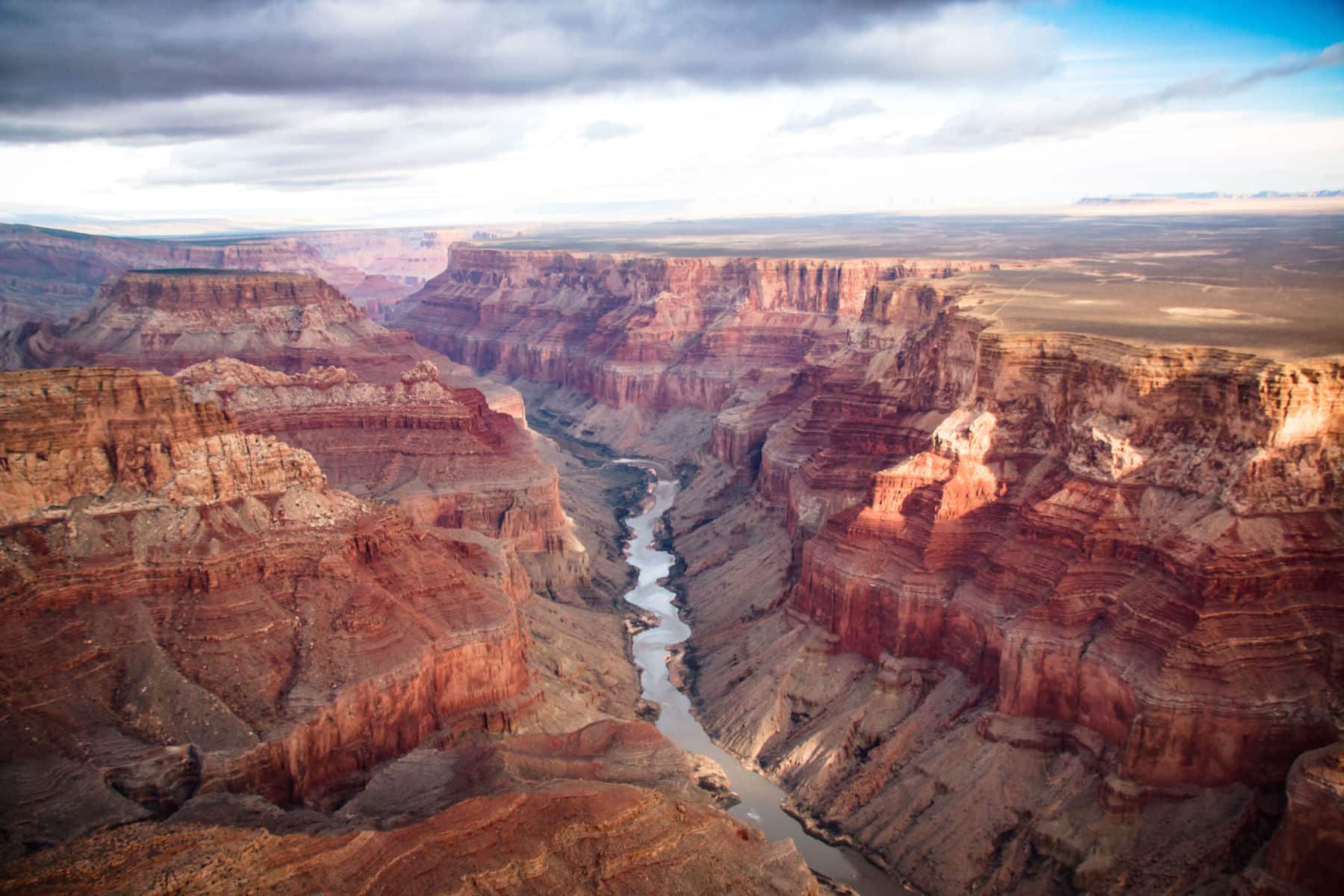
Take A Deeper Dive With A Story That’s Worthy Of Indiana Jones: The Exploration of the Colorado River and Its Canyons by John Wesley Powell.
The Grand Canyon Today
Today, the Grand Canyon National Park is one of the most popular tourist destinations in the United States, attracting millions of visitors each year.
The park offers a wide range of recreational opportunities, including hiking, camping, rafting, and wildlife watching, and is also home to several important scientific and cultural sites, including archaeological ruins and historic landmarks.
The Grand Canyon National Park is widely recognized as one of the great natural wonders of the world, and its history and beauty continue to inspire and awe visitors from around the globe.
Whether you’re a seasoned adventurer or simply looking to experience the natural beauty of the American West, a visit to the Grand Canyon National Park is a truly unforgettable experience.

CHECK OUT: 16+ FASCINATING Grand Canyon Facts
Things To Do At The Grand Canyon
The Grand Canyon National Park is a vast and diverse natural area, offering a wide range of activities and attractions for visitors of all ages and interests. Here are some of the most popular things to do at the Grand Canyon National Park:
- Scenic drives: The park offers several scenic drives, including the South Rim Drive, which provides panoramic views of the canyon, and the Desert View Drive, which offers views of the surrounding deserts and forests.
- Hiking: The park offers numerous hiking trails, ranging from short, easy walks to challenging backcountry treks, allowing visitors to explore the diverse landscapes and geological formations of the canyon.
- Rafting: The Colorado River, which runs through the Grand Canyon, is a popular destination for rafting and kayaking, providing opportunities for adventure and exploration on one of the most iconic rivers in the world.
- Wildlife watching: The park is home to a diverse range of wildlife, including bighorn sheep, elk, and several species of birds, making it a popular destination for wildlife watching and birding.
- Photography: The Grand Canyon provides numerous opportunities for stunning photography, and visitors are encouraged to capture the beauty and majesty of the canyon in their own way.
- Cultural history: The park is rich in cultural history, with evidence of human habitation in the region dating back thousands of years. Visitors can explore several archaeological sites, including the Tusayan Ruins, and learn about the indigenous peoples who once lived in the area.
- Stargazing: The Grand Canyon National Park is a designated International Dark Sky Park, offering exceptional opportunities for stargazing and astronomical observation.
- Guided tours: The park offers a variety of ranger-led tours, including walks, talks, and scenic drives, allowing visitors to learn about the history, geology, and wildlife of the canyon.
RELATED: 10 EPIC Wyoming National Parks Worth Visiting
5. Old Spanish National Historic Trail
The Old Spanish Trail, “the longest, crookedest, most arduous pack mule trail in the history of America,” (1829-1848) was best-known during the Mexican period of southwestern history. The trail started in Santa Fe and terminated in Los Angeles, and had several variants – the Armijo Route, the Main Branch, and the mountainous North Branch with East and West Forks.
For almost 200 years, a primary concern for Spanish authorities was finding a supply link between the provincial capitals of northern New Spain and the Pacific Ocean. El Camino Real (the Royal Road) existed — Santa Fe to Chihuahua, and on to Mexico City, but the round trip took many months.
Early in the 19th century when independence from Spain was achieved, Mexico began to allow in trade goods from the United States over what came to be called the Santa Fe Trail, which opened in 1821 from Missouri to New Mexico. But the need continued for a connection with California and the Pacific Ocean. (Source: Arizona State Parks & Trails)
Enter Antonio Armijo
It was the Mexican trader Antonio Armijo who led the first commercial caravan from Abiquiú, New Mexico to Los Angeles in late 1829. Over the next twenty years, Mexican and American traders continued to use routes similar to the one he pioneered.
This trail network was a combination of the indigenous footpaths, early trade and exploration routes, and horse and mule routes which became known collectively as the “Old Spanish Trail.”
Today numerous programs and activities are available at sites and in communities along the Trail.
.jpg)
6. Organ Pipe Cactus National Monument
Distance From Tucson: Two hours & 7 minutes via AZ-86 W.
When you visit the Organ Pipe Cactus National Monument you will discover that it’s not only a great Arizona national park but also an International Biosphere Reserve. Go there and behold a thriving community of plants and animals.
At Organ Pipe, visitors will have a variety of camping experiences to choose from including developed, primitive, and backcountry. There are some wonderful trails to hike which include:
- Visitor Center Nature Trail (.01 miles)
- Campground Perimeter Trail (1 mile)
- Desert View Trail (1.2 miles)
- Palo Verde Trail (2.6 miles)
There are mountain trails available to hike as well at Ajo and Puerto Blanco.

There’s A Biosphere There Too
The United Nations Educational, Scientific And Cultural Organization (UNESCO) conceived the Biosphere Reserve Program as one solution to the seemingly overwhelming environmental pressures confronting the world.
The biosphere at Organ Pipe has attracted scientists from around the world to conduct a variety of important studies to help us better understand the Sonoran Desert and the impact of humans on this amazing landscape.
CHECK OUT: 25 Bucket List FAMOUS Landmarks In America
7. Petrified Forest National Park
Distance From Tucson: Four hours & 40 minutes via AZ-77 N & US-60 E.
Petrified Forest National Park covers over 93,000 acres of land and contains one of the largest and most colorful concentrations of petrified wood in the world.
The park also features a diverse array of other geological and paleontological resources, as well as Native American artifacts and cultural sites.
The park is best known for its vast deposits of petrified wood, which are the remains of trees that lived in the area over 200 million years ago.
The wood has been turned to stone over the millennia due to the infiltration of minerals into the porous wood fibers. The result is a stunning display of brilliantly colored stone, with shades ranging from red, blue, and green, to yellow, black, and brown.
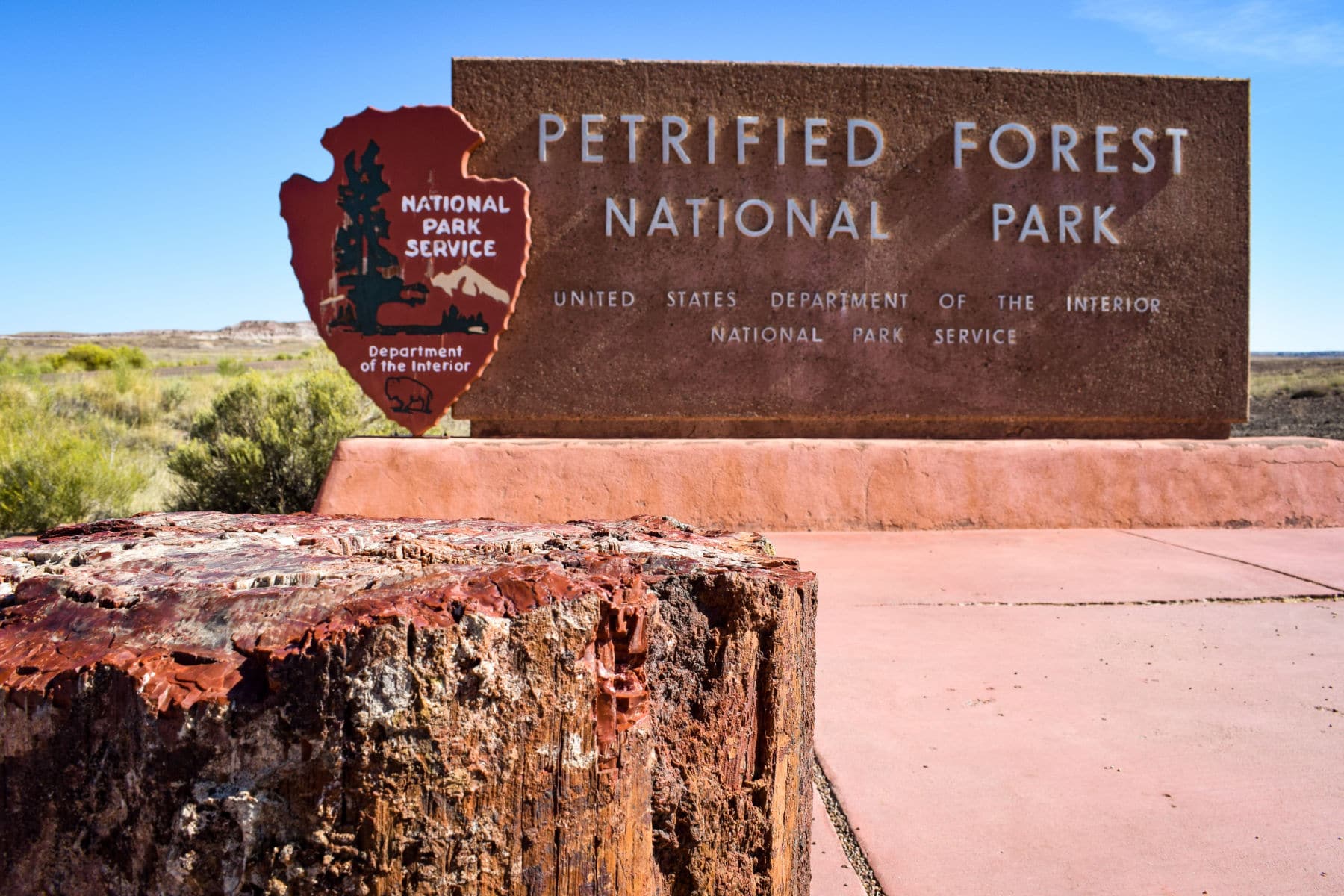
In addition to the petrified wood, Petrified Forest National Park is home to a rich array of other geological and paleontological features, including badlands, canyons, and sandstone formations.
The park also contains evidence of ancient ecosystems, including fossilized footprints of early reptiles, and the remains of plants, insects, and other animals.
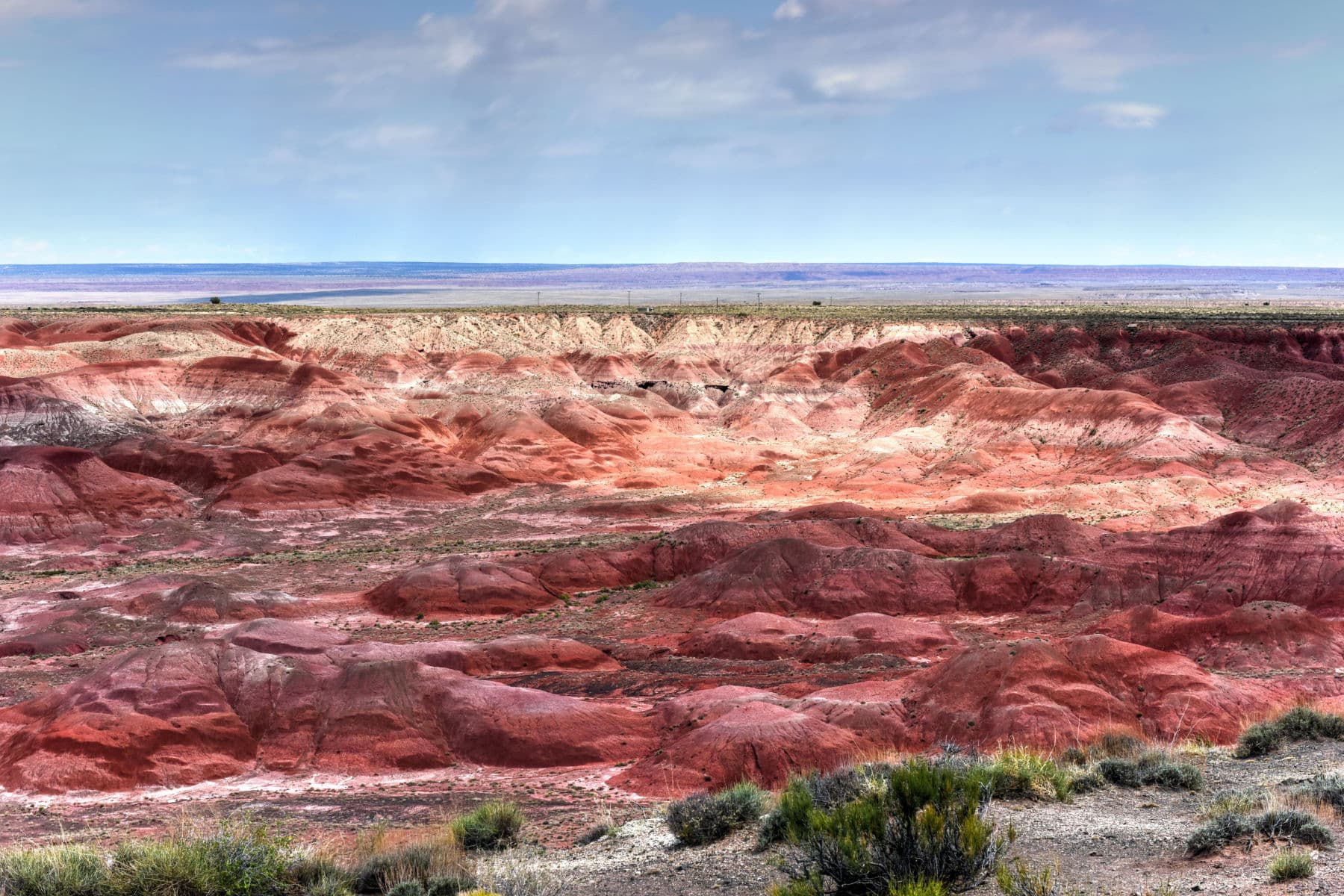
The Park Is Known For Its Connections To Native American Cultures
In terms of cultural resources, Petrified Forest National Park is significant for its connections to Native American cultures, including the Navajo, Hopi, and Zuni tribes. The park contains numerous sites of archaeological and cultural importance, including petroglyphs, dwelling sites, and ancient roads and trails.
Visitors to Petrified Forest National Park can enjoy a range of recreational opportunities, including hiking, backpacking, wildlife viewing, and scenic drives.
The park also offers a variety of educational programs, guided tours, and ranger-led activities, making it an ideal destination for families, nature lovers, and anyone interested in the history and natural beauty of the American Southwest.
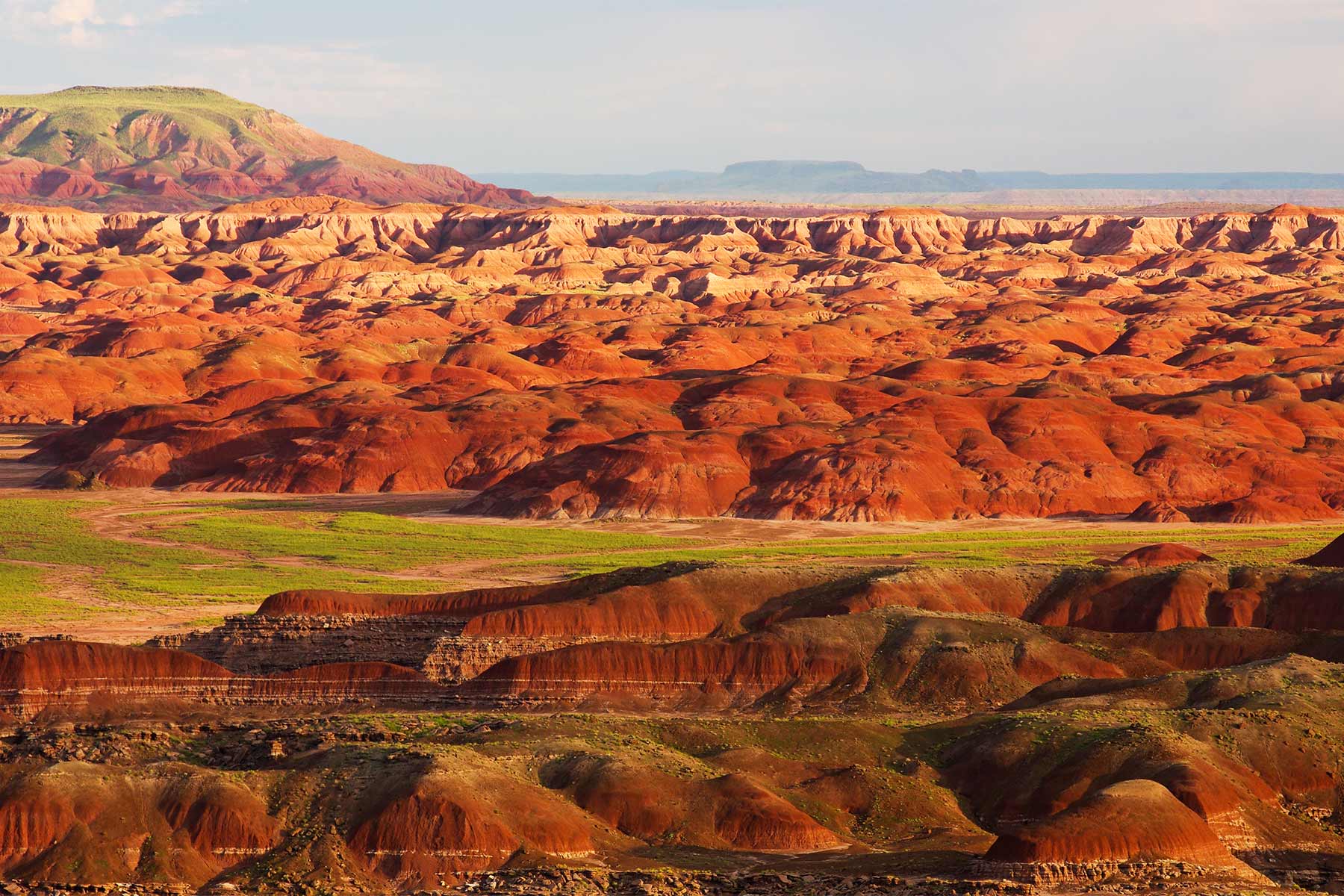
While You’re There Check Out The Rainbow Forest Museum
It’s also home to the Rainbow Forest Museum, which features paleontology exhibits and many trail access points.
In the center of the park you’ll find the petroglyphs of Newspaper Rock and the ruined village of Puerco Pueblo.
If you travel to the north of the park, you can visit the Painted Desert Inn, a 1930s adobe building, is a museum with Hopi murals.
CHECK OUT: 10 EPIC National Parks Near Phoenix You’ll Love
Still More National Parks In Tucson
8. Saguaro National Park
Distance From Tucson: 18 minutes via I-10 W.
Saguaro National Park is divided into two separate districts, the Tucson Mountain District to the west of Tucson and the Rincon Mountain District to the east.
The park was established in 1933 to preserve and protect the giant saguaro cactus, which is the symbol of the American Southwest.
The park is characterized by its unique and stunning desert landscape, which is dominated by the towering saguaro cactus. The saguaro is a slow-growing cactus that can reach heights of up to 50 feet and live for over 200 years.
In addition to the saguaros, the park is home to a rich and diverse array of other plant and animal species, including several species of cacti, yucca, palo verde trees, and a variety of mammals, birds, reptiles, and insects.

Visitors Can Enjoy A Range Of Recreational Activities
Visitors to Saguaro National Park can enjoy a range of recreational activities, including hiking, camping, wildlife viewing, and scenic drives. The park offers over 165 miles of trails, ranging from easy nature walks to challenging backcountry hikes.
The park also features several scenic drives, including the Cactus Forest Drive and the Bajada Loop Drive, which offer stunning views of the saguaro-studded landscape.
In addition to its natural beauty, Saguaro National Park is rich in cultural and historical significance. The park contains several important Native American sites, including rock art and petroglyphs, and is surrounded by a vibrant and diverse desert community that has a rich history and cultural heritage.
The park offers a variety of educational programs, including ranger-led hikes and talks, and is a popular destination for families, nature lovers, and anyone interested in the unique beauty and history of the American Southwest.
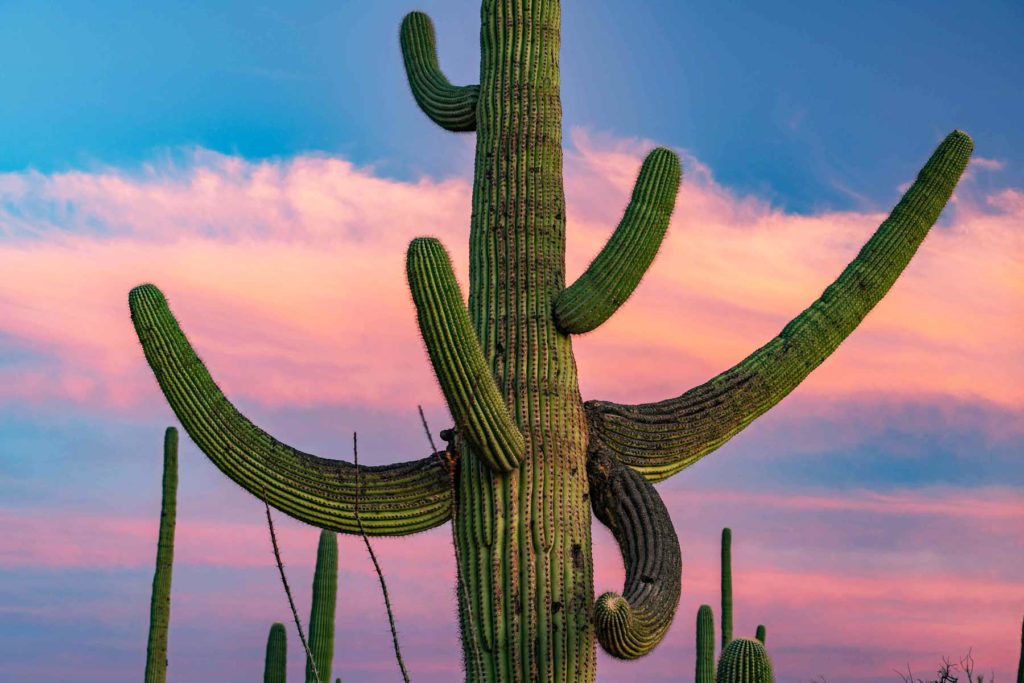
Things To Do At Saguaro National Park East District
The Cactus Forest Scenic Loop Drive is a paved, combination one-way and two-way road that features several trailheads, scenic vistas, and pullouts in a total of 8 miles.
To reach the hiking trails from the visitor center, you must drive into the park on the Loop Drive. The first trailhead is accessed in about 2 miles and begins at the Mica View Picnic Area. There are several trailheads with parking off the Loop Drive.
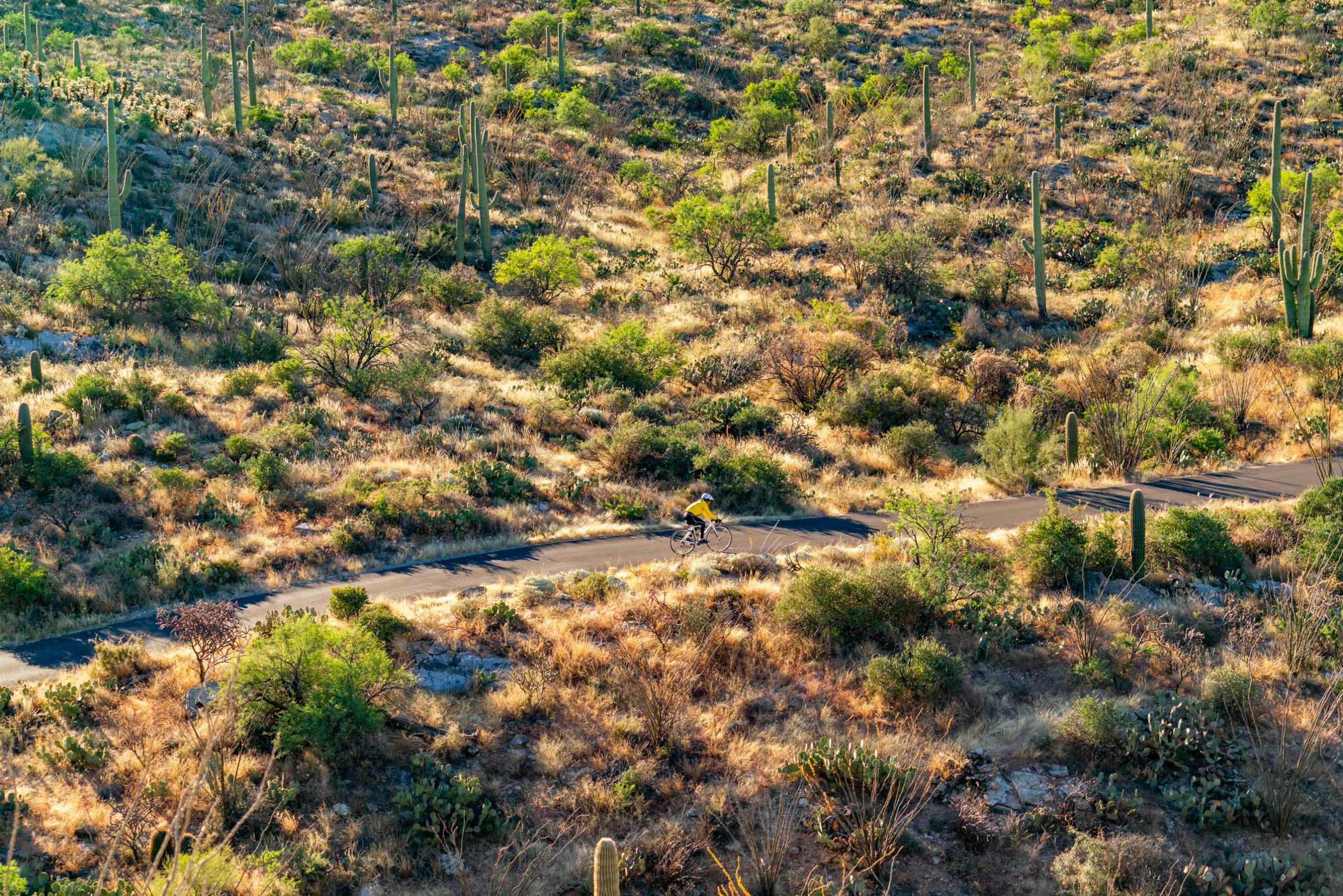
For a more complete list, check out our article on the best things to do in Saguaro National Park.
Things To Do At Saguaro National Park West District
The Scenic Bajada Loop Drive is a great way to explore the district’s foothills. There are scenic pullouts, picnic areas, and hiking trailheads in a 6 mile loop.
Bicycling is permitted along the Bajada Loop Drive and all paved roads. Bicycling is not permitted on any trails, except the 0.5 mile Belmont Multi-use trail and the 2.5 mile Golden Gate Multi-use trail. (Source: NPS)

Check Out Our Saguaro National Park Film
SAGUARO is the culmination of weeks spent filming in one of the most unique and vibrant deserts in the world, the Sonoran Desert.
Encompassing over 90,000 acres, Saguaro National Park preserves vast forests of the iconic saguaro cactus, rare wildlife, and majestic landscapes.
9. Tonto National Monument
Distance From Tucson: Two hours & 43 minutes via AZ-77 N.
If you’re someone who has never experienced a cliff dwelling then you’re in for a real treat because visitors to Tonto National Monument have the opportunity to marvel at two Salado-style cliff dwellings.
You can also see colorful pottery, woven cotton cloth, and other artifacts tell a story of people living and using resources from the northern Sonoran Desert from 1250 to 1450 CE.
Tonto was established in 1907. It’s mission is to protect several cliff dwelling sites and numerous smaller archeological sites scattered throughout the highlands and alluvial plains within the Tonto Basin, Arizona.
The Lower Cliff Dwelling is one of two large sites accessible to the public, and is the primary site visited in the Monument throughout the year.
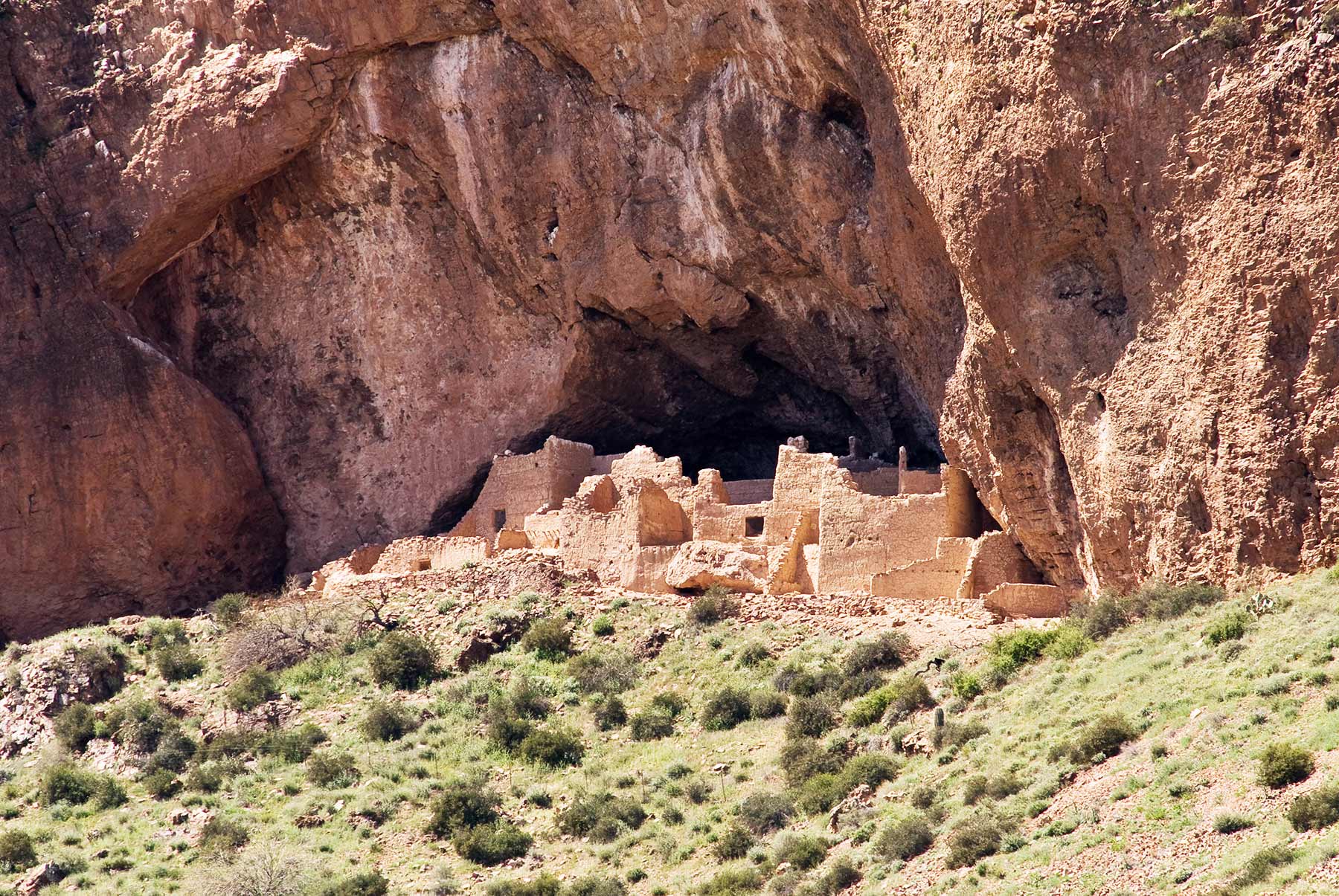
10. Tumacácori National Historical Park
Distance From Tucson: 43 minutes via I-19 S.
The history of the Southwestern United States was heavily influenced by Spain during its colonial era. Tumacácori National Historical Park in Southern Arizona protects the ruins of three missions founded by the Spanish during this time.
Jesuit Father Eusebio Franciso Kino founded 24 missions in the region including two of the three on display at Tumacácori. They were Los Santos Ángeles de Guevavi and San José de Tumacácori. The third, San Cayetano de Calabazas, was founded later by Jesuit father Francisco Pauer.
In January of 1691, Kino founded the very first mission, Tumacácori, in what later would become the state of Arizona.
Things To Do At Tumacácori National Historical Park
Visitors enter Tumacácori National Historical Park through the Tumacácori visitor center. The visitor center offers a 15 minute video, an excellent museum, and a bookstore.
A self-guided interpretive tour booklet, “In the Footprints of the Past,” is available for loan or purchase in the bookstore.
Guided tours are available at 11:00 and 2:00 January through March, and may be available at other times and seasons. Special tours, such as guided walks to the Santa Cruz River, may also be available. (Source: NPS)
National Parks Near Tucson FAQ
Only one national park can claim the status as nearest to Tucson: Saguaro National Park. The west and east units of the park form the mountains that surround downtown Tucson on either side.
There are 22 sites—encompassing national monuments like Chiricahua and Casa Grande Ruins, national memorials, national historic sites, and of course, three national parks: Saguaro, Petrified Forest, and Grand Canyon.
Why Trust Us About National Parks Near Tucson?
We’re Jim Pattiz and Will Pattiz, collectively known as the Pattiz Brothers (and sometimes the Parks Brothers) and we absolutely LOVE the national parks.
You should probably know that we don’t just make this stuff up out of thin air. We’ve spent our entire adult lives exploring and filming America’s national parks and public lands.
We’ve worked with the National Park Service, the Department of Interior, USDA, and the U.S. Forest Service for years creating films on important places and issues. Our work has been featured in leading publications all over the world and even some people outside of our immediate family call us experts on the national parks.
Meet The Parks Brothers
Map Of National Parks Near Tucson
List Of National Parks Near Tucson
- Casa Grande Ruins National Monument
- Fort Bowie National Historic Site
- Glen Canyon National Recreation Area
- Grand Canyon National Park
- Old Spanish National Historic Trail
- Organ Pipe Cactus National Monument
- Petrified Forest National Park
- Saguaro National Park
- Tonto National Monument
- Tumacácori National Historical Park
To Learn More
- The Exploration of the Colorado River and Its Canyons by John Wesley Powell.
- Arizona Myths and Legends: The True Stories behind History’s Mysteries (Legends of the West) by Sam Lowe.
- Roadside History of Arizona (Roadside History Series) by Marshall Trimble.
- Arizona Ghost Towns: 50 of the State’s Best Places to Get a Glimpse of the Old West by Noah Austin.
- A Natural History of the Sonoran Desert by the Arizona Sonora Desert Museum
We Hope You’ll Follow Our Journey

Our goal here at More Than Just Parks is to share the beauty of America’s national parks and public lands through stunning short films in an effort to get Americans and the world to see the true value in land conservation.
We hope you’ll follow our journey through the parks and help us to keep them the incredible places that they are. If you’re interested in joining the adventure then please sign up below!
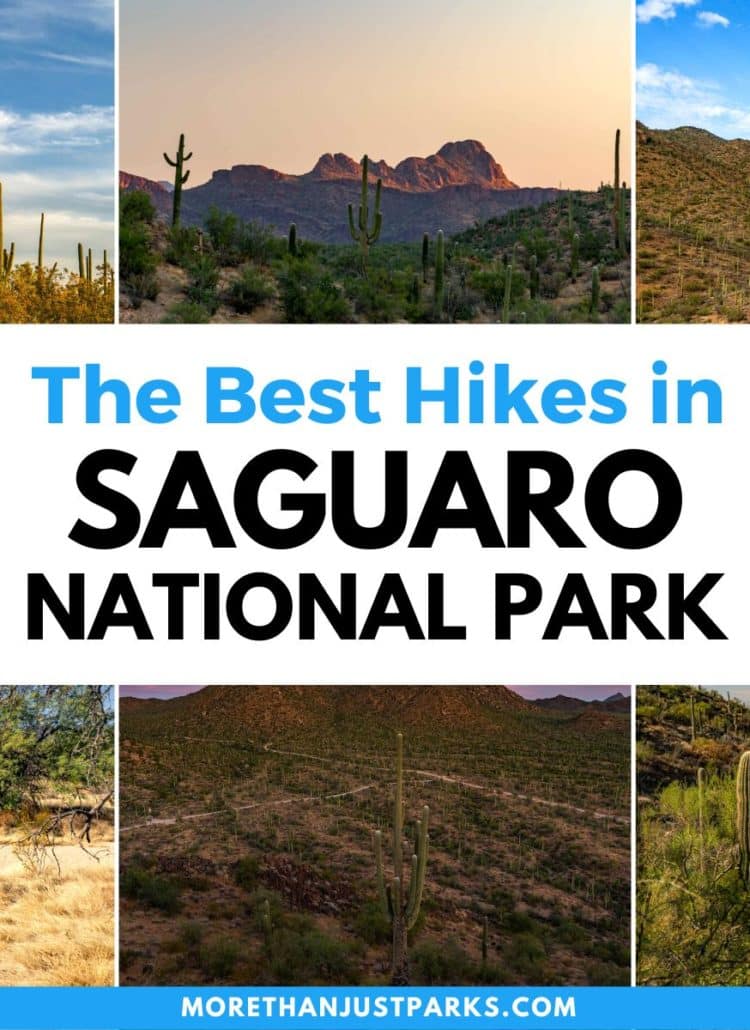
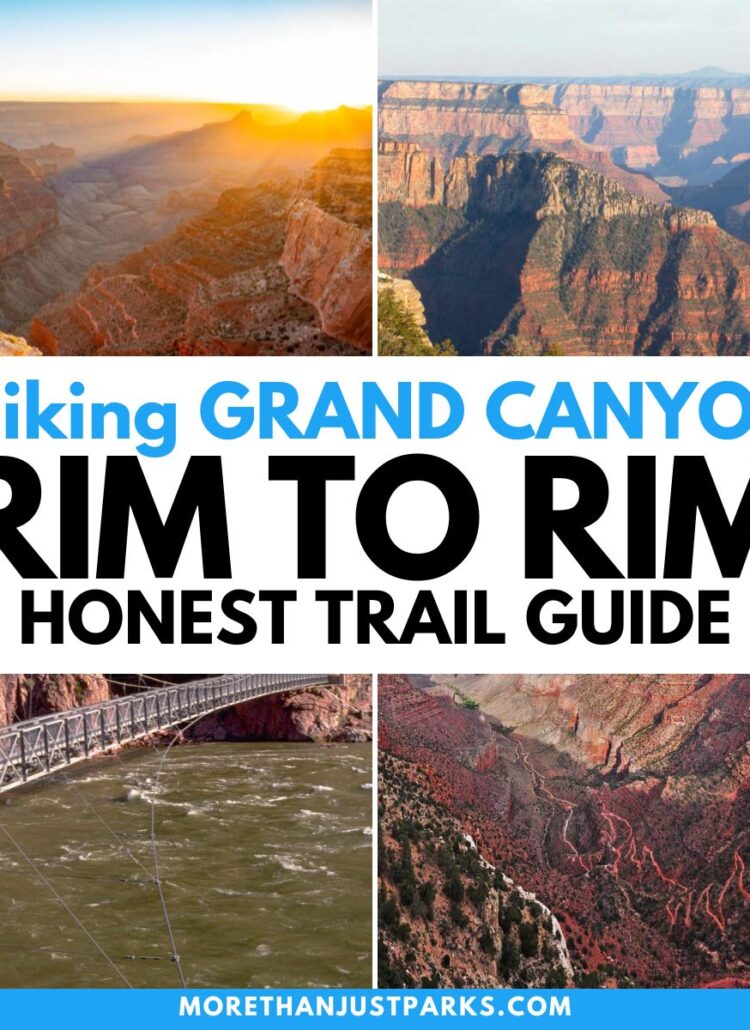
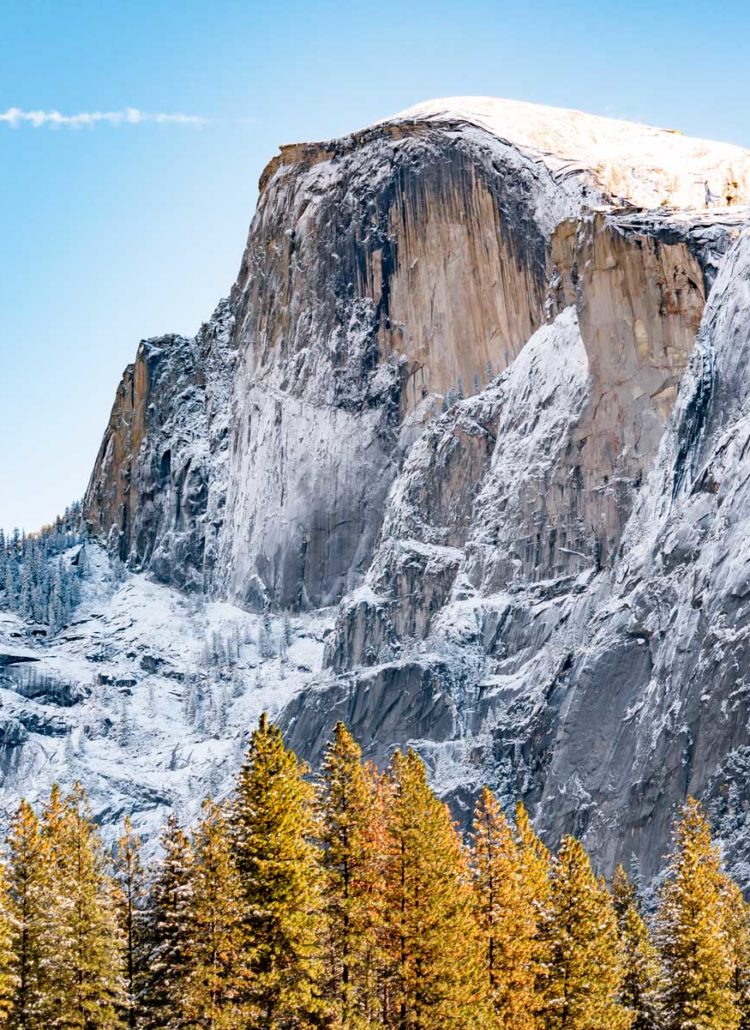


Leave a Reply